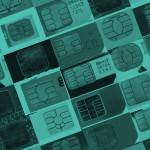The serious data leaks suffered by Target and Neiman Marcus caused by hackers during the holiday season have re-energized the now long-standing question, “Are EMVs the future of credit cards?” US retailers are finally making the effort to catch up with the rest of the world.
Instead of leading the globe in innovation and cutting edge technology, the US has fallen behind in use of EMV (Europay, MasterCard, Visa) protocols. The recent breaches have magnified the security flaws in cards with magnetic stripes. These deficiencies have not been a “secret,” but obvious to all credit card issuers and manufacturers for some years.
 EMV-Enabled Cards
EMV-Enabled Cards
With embedded computer chips and PINs, these cards are the height of security for retailers and cardholders. Credit card processing becomes equally secure, protecting both retailers and shoppers.
Commonly called “smart cards,” EMV-enabled cards use open-standard specifications to record payments on terminals programmed to accept them. EMVCo manages and maintains these protocols. EMVCo is owned by AmEx, Discover, JCB, MasterCard, Visa and other payment industry organizations, partnering as associates and technical consultants.
Where Are These Cards Now?
EMV cards are currently active for merchant services in an estimated 80 countries around the globe. Other countries not yet fully on stream with EMV smart cards, such as Canada, are in the process of converting to this embedded chip technology.
Instead of being the first, the US is one of the last countries to convert its mag stripe cards to EMV. In fact, EMVCo estimates that as far back as the fourth quarter of 2012, there were over 1.6 billion (with a “B”) smart cards active around the world.
- Europe has over 95 percent of all payment terminals that are smart card active.
- Canada and Latin America, including the Caribbean, have around 80 percent EMV-enabled terminals.
- Even the Middle East and Africa have almost 80 percent smart card terminals.
 Why the US Is “Late”
Why the US Is “Late”
Those outside the banking and credit card processing industries often wonder why the US, typically a world leader, is so late getting to the dance? The delayed entry can be summed up in one word: volume. Migration to EMV cards in the US involves massive cost because of the number of magnetic stripe credit and debit cards, along with traditional and handheld POS systems, in circulation.
The merchant services industry and card issuers have been technologically ready for some years. However, the pure volume of mag stripe cards and terminals has generated the conversion delay. It was not until 2012 that major card issuers, such as MasterCard, Visa, AmEx and Discover, published strategies to perform the migration from magnetic stripe to embedded computer chip cards.
Since existing POS systems also need conversion, the cost of migration further increases for retailers of all sizes. Still, the benefit of using EMV cards and terminals remains indisputable.
 Benefits
Benefits
The benefits of EMV technology are impressive and well known.
- Fraud prevention remains the most important benefit. The recent unfortunate events plaguing Target and Neiman Marcus, where so much plastic card sensitive information was compromised, emphasized this benefit beyond a shadow of a doubt.
- Increased use of ecommerce, mobile merchant accounts and online payments are much more secure with EMV-enabled plastic cards. While the “best” hackers try to stay ahead of the curve, smart cards enjoy a uniquely secure reputation at the moment.
- EMV technology offers detailed cardholder verification techniques, which provide online security that mag stripe cards do not. Using EMV cards minimizes the current problems of counterfeit, lost or stolen cards.
Credit Card Processors
This industry eagerly anticipates the future conversion to EMV technology. Industry insiders predict fewer errors, chargebacks and processing delays through the migration away from magnetic stripe terminals to EMV-enabled devices. The reasons?
- Increased card authentication during the payment transaction protects cardholders from counterfeit card use by others.
- Secure cardholder verification further protects merchants and cardholders against use of lost or stolen cards.
- Use of card issuer determined permissions increases security of transaction authorizations, minimizing many potential problems.
Some US banks have started issuing EMV cards to customers. The process of total migration will take some time, requiring the patience of the industry, cardholders and merchants. The resulting huge decreases in fraud losses will be worth the wait, however.
Since most current EMV cards also have a mag stripe, travelers from the UK and other EMV countries can use their credit and debit cards at US retailers until the conversion is complete. While issuing only chip-enabled cards is under discussion in Europe, for the foreseeable future, most international travelers should encounter no problems using chip and mag stripe cards in the US.

